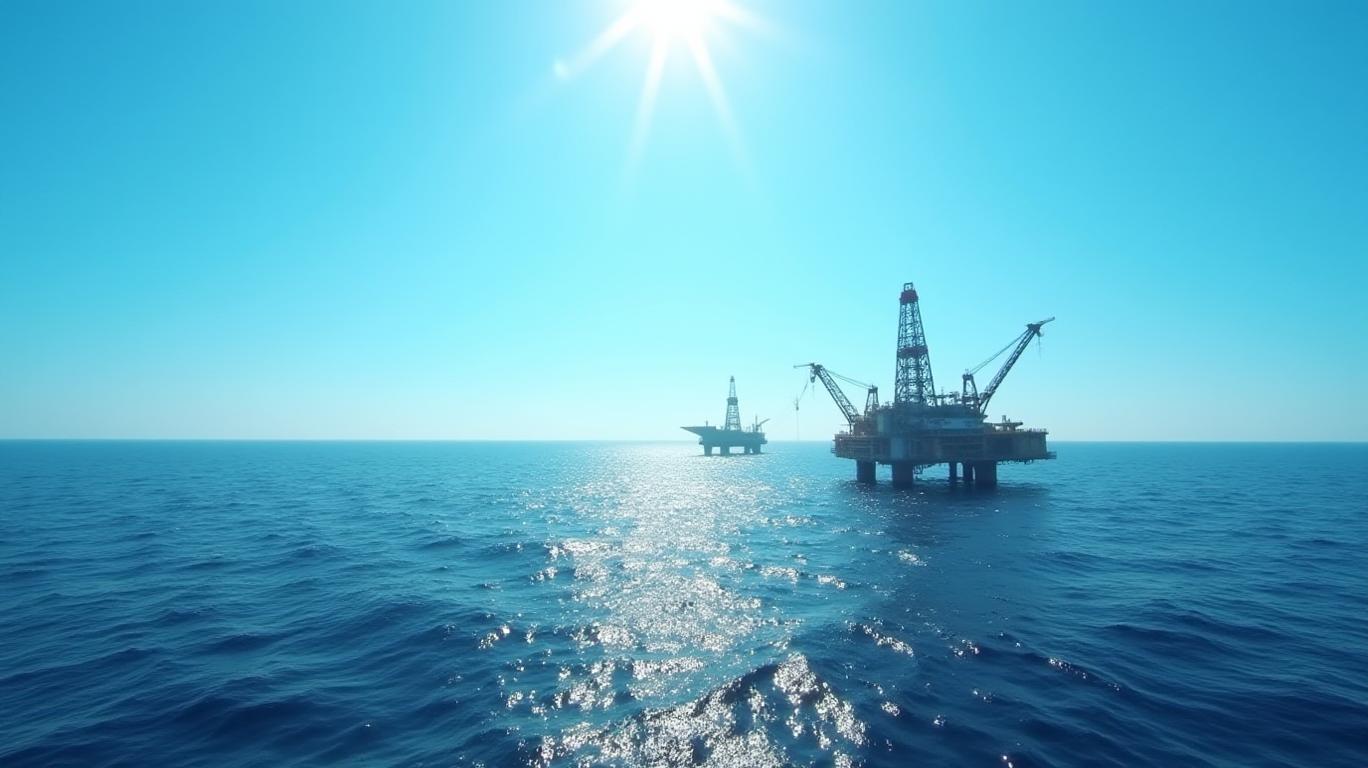Valeura Energy's Block B5/27: A Blueprint for Sustained Cash Flow and Field Longevity
Valeura Energy Inc. (TSX: VLE) has quietly emerged as a master of operational precision in the oil and gas sector, particularly through its Gulf of Thailand operations. The company's recent drilling results at Block B5/27—specifically the Jasmine and Ban Yen fields—highlight a strategic approach to reservoir optimization that is extending field life, bolstering cash flow, and creating a compelling investment thesis. For income-focused investors seeking stability in an uncertain market, this is a story worth dissecting.
The Drilling Success That's Rewriting the Playbook
The Q2 2025 drilling campaign at Block B5/27 was nothing short of transformative. Valeura completed an eight-well program targeting the Jasmine C, Ban Yen A, and Jasmine D platforms, with results that surpassed expectations:
- BYA-35ST1: A deviated well that tapped into six sand reservoirs, doubling pre-drill estimates for total oil pay. This multi-objective well is now producing sequentially from these zones, with additional appraisal data identifying future infill drilling opportunities.
- JSD-44/45: Wells drilled at the Jasmine D platform accessed five secondary reservoirs, validating Valeura's ability to expand production zones through horizontal laterals and advanced geosteering.

These results are not just about short-term gains. By targeting underdeveloped reservoir layers and optimizing recovery efficiency, Valeura is extending the economic life of its fields. The Jasmine field alone accounts for 35% of Valeura's 2025 production guidance (23,000–25,500 bbls/d), and its production has already seen a 26% uplift post-infill drilling in late 2024.
Cash Flow Resilience: A Wall of Strength
The financials paint an equally compelling picture. Valeura's Q1 2025 results showed:
- Production: 23,853 bbls/d (up 9% year-over-year).
- Adjusted Cash Flow: $74.0 million (a 55% jump from Q1 2024), driven by lower opex ($24.1/bbl, down 8%) and tax efficiencies from corporate restructuring.
- Balance Sheet: $239 million in cash and no debt, providing ample flexibility to fund its $125–150 million 2025 CapEx budget.
This liquidity is critical. Valeura is using it to:
1. Commission a Low-BTU Gas Generator: Redirecting waste gas to power generation, reducing diesel reliance and GHG emissions.
2. Execute a 10-Well Program at Nong Yao: Post-B5/27 drilling, the rig is now focused on another high-potential field, maintaining operational momentum.
3. Fund the Wassana Redevelopment: A $25–30 million project targeting 2027 start-up, which could add 4,000–5,000 bbls/d of production.
The Reservoir Optimization Edge: Why This Isn't Just Luck
Valeura's success isn't accidental. Its reservoir optimization strategies are methodical and data-driven:
- Horizontal Laterals: Using advanced well designs (e.g., autonomous inflow control devices) to manage water breakthrough and maximize oil recovery.
- Multi-Zone Completions: Drilling laterals across multiple reservoirs (e.g., the 500/600 and 250/245 series sands) to exploit untapped reserves.
- Environmental Synergy: The Jasmine field's gas generator project reduces emissions intensity while lowering costs—a win for both the planet and the P&L.
These tactics are paying off. The company's reserves replacement ratio—critical for sustaining production—has consistently exceeded 100%, with 2024's infill drilling alone contributing to a 26% production boost.
Risks? Yes. But Manageable.
No investment is risk-free. Valeura faces:
- Exploration Uncertainty: The Ratree prospect's failure to find commercial hydrocarbons underscores exploration risk. However, Valeura's focus on high-probability appraisal targets mitigates this.
- Commodity Price Volatility: Oil prices below $70/bbl could strain margins. Yet Valeura's low opex ($24/bbl) and cash-rich balance sheet provide a buffer.
The Bottom Line: A High-Conviction Opportunity
Valeura Energy is a textbook example of how operational excellence and strategic capital allocation can turn mature fields into cash engines. With:
- A 35%+ production contribution from B5/27
- A $239M war chest to fund growth and dividends
- A 55% cash flow surge in early 2025
- A 26% production uplift from infill drilling
This is a company positioned to thrive even in a low-oil-price environment. For income investors, the dividend yield of ~4% (based on current stock price) is a sweetener—but the real value lies in the sustainable growth of cash flows.
Act Now: The Catalysts Are Clear
- Q2 2025 Results: The eight-well campaign's success is already priced in, but upcoming updates on infill well performance and the Nong Yao program could drive upside.
- Wassana Start-Up (2027): A near-term catalyst to boost production and valuation multiples.
- Sustainability Advantages: The low-BTU gas project positions Valeura as a leader in ESG compliance, attracting ESG-focused capital.
Final Call to Action
Valeura Energy's Block B5/27 is more than a drilling success—it's a model of how to breathe decades into aging fields. With a fortress balance sheet, proven execution, and a pipeline of high-impact projects, this is a stock primed to outperform. For investors seeking stability and growth in energy, the time to act is now.
Investment Thesis: Buy
(VLE) for its reservoir optimization-driven cash flow resilience, extended field life, and undervalued growth profile. Target a 12-month price target of C$5.50, with a risk-reward ratio favoring upside.
Comments
No comments yet